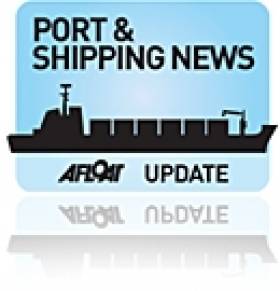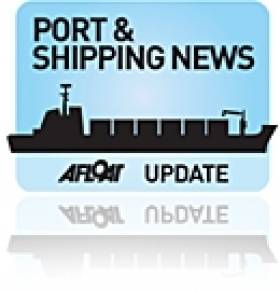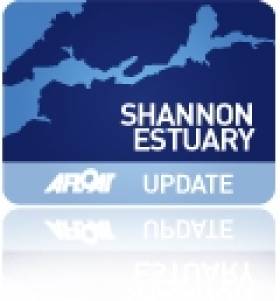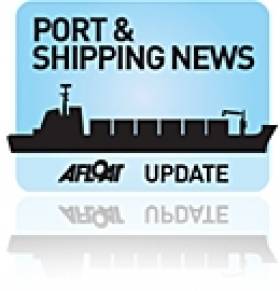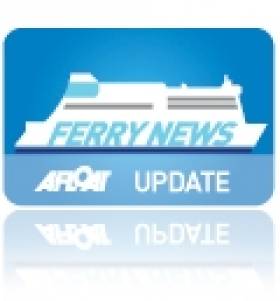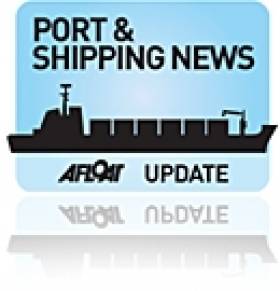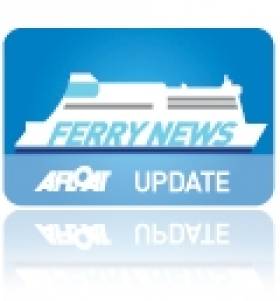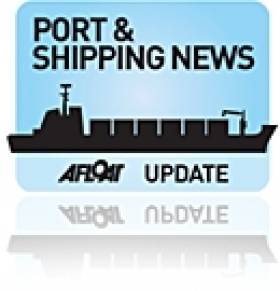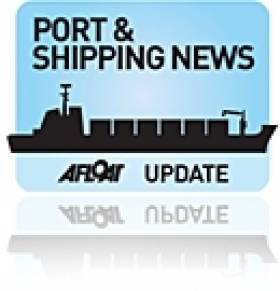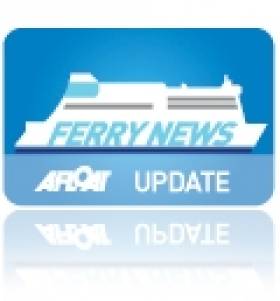Displaying items by tag: Ports & Shipping
Post-Panamax Containerships Order from Hapag-Lloyd
#PostPanamaxShips – Container shipping giant, Hapag Lloyd prepares for Panama Canal's new locks opening next year with an order for five 10,500 TEU container ships, reports LloydsLoadingList.com
Not all major lines are seeking to boost competitiveness by buying the largest vessels available in a bid to reduce operating costs.
Hapag-Lloyd has instead ordered five new container ships of just 10,500 TEU capacity which it plans to deploy on South American trades and through the Panama Canal when its new locks increase the size of ships that can transit.
"When the expanded Panama Canal opens next year, Hapag-Lloyd will therefore have the optimal fleet for this trade," said the German line in a statement. "The expansion of the Panama Canal is one of the biggest civil engineering projects in the world, and will allow the passage of large vessels of up to 14,000 TEU from what is known as the post-Panamax class."
The new ships will feature 2,100 reefer plugs aimed at perishable trades and are due for delivery in 2016/2017 from Hyundai Samho Heavy Industries in South Korea.
#ArdmoreExpands – Once again, Ardmore Shipping Group has announced contracts for further newbuilds, with four 25,000 Dwt IMO 2 eco-design product & chemical tankers.
The contract order has been placed with Fukuoka Shipbuilding Co. Ltd., Japan ("Fukuoka") for a total price of approximately $118,000,000.
As part of the contracts, Ardmore has also negotiated fixed price options for additional vessels. Ardmore expects to take delivery of the contracted vessels between fourth quarter 2014 and fourth quarter 2015.
Including these four newbuildings, Ardmore has exercised options or signed newbuilding contracts for a total of eight vessels since pricing its IPO on July 31, 2013, increasing the Company's fleet to 20 vessels consisting of eight vessels in operation and 12 newbuildings on order.
An example of this rapidly expanding fleet programme was an order for a pair of 37,000dwt chemical tankers which were only announced last week.
#ShannonEXERCISE- A two-day exercise held on the Shannon Estuary last week was a first in Europe, in that it involved testing Smartly Remotely Operated Submarines and Unmanned Aerial Vehicles.
The exercise replicating the scenario of a 43,000 tonne container ship 'Marée Noire' suffering hull damage when impacting with rock entering the Shannon Estuary due to loss of steering and floundering off the coast of Scattery Island.
The estuary off Co. Clare has become a key European test site for a range of highly advanced 'smart technologies' Marine Robots and Unmanned Aerial Vehicles.
The University of Limerick is leading the integration and deployment of the underwater and aerial technologies, within this exercise as part of a European Research Collaboration NETMAR which has Irish, UK, French, Spanish and Portuguese partners.
The exercise is a first in terms of scale and use of robotic platforms as part of Ireland's largest marine emergency response exercise to deal with a major environmental disaster.
IMDO Shipping Review: Maersk Re-Route Via Suez, Dry-Bulk Momentum, Ireland Ranked 3rd in Globalised Economy and more…
#Ports&Shipping -The latest IMDO Weekly Shipping Market Review reports that the world's largest container shipping line, Maersk Line, is looking to change its path for the trade lane of Asia to US East Coast, by opting for the Suez Canal as opposed to the current Panama Canal.
The re-routing is to take advantage of economies of scale, as Maersk will be able to send a vessel through the Suez Canal that can carry up to 9,000 TEU containers, which would be more cost-effective than sending two 4,500 TEU vessels through the Panama Canal.
Dry Bulk Market: On the back of increased cargo availability, the dry bulk market has maintained its rising momentum. The steady increase is illustrated in the weekly rise in the industry's benchmark, Baltic Dry Index (BDI), finishing at 872, up from 818 the previous week.
Short Sea Shipping: In the European Short Sea Market, as with most weeks lately, can be summarised as "steady/flat", according to HC Shipping & Chartering". However, this week highlighted the abundance of spot tonnage slightly more than most weeks, along with owner's eagerness to cover positions becoming more evident.
Irish Economy: Globalization Ireland has been ranked the world's third most globalised economy in terms of GDP, and the most globalised nation in the western world, according to a new index published by Ernst and Young. The index is measured by a country's openness to trade, movement of capital, exchange of technology and ideas, labour movements, and cu ltural integration. Ireland finished third behind Hong Kong and Singapore, but ahead of Switzerland, Sweden, Denmark, Belgium and the UK.
To read more and other stories, they can be viewed or downloaded as a PDF from the IMDO Shipping Markets Review for Week 11.
Ferry to France Forced to Abandon Approach to Port
#Ferry News – Due to heavy seas, Irish Ferries French route vessel, Oscar Wilde had to abandon its approach to Cherbourg last night.
The cruiseferry with more than 500 passengers had departed Rosslare and made several attempts to dock at the French port with the assistance of tugs in winds of up to 100km an hour.
One crew member suffered a broken leg during one of the failed attempts after a line snapped. He is still on board but a spokesperson for Irish Ferries says he is being well catered for on board. For more the Irish Examiner reports.
According to the Irish Ferries website, the vessel is currently offshore of Cherbourg and is awaiting an improvement in weather conditions before a further attempt to berth will be made at 13.00 hours local time today.
IMDO Shipping Review: Irish Industrial Productivity Drops, European Port Growth, Asia-Europe Trade Increases and much more…
#Ports&Shipping -The latest IMDO Weekly Shipping Market Review reports that Irish industrial production fell by almost 2 per cent in January, compared to the previous month, in line with weakening trend in industry since mid-2012, according to data released by the Central Statistics Office (CSO).
European Ports: Throughput at northern European ports will grow by 1.8% in 2013, after a decline of 0.8% last year, according to the latest North Europe Global Port Tracker report.
Container Market: Asia-Europe trade volumes lane experienced their first year-on-year increase in almost a year, according to Container Trade Statistics. The latest data reveals that westbound volumes on the Asia to Europe trade increased by 2.5% year on year in January to reach 1.3m TEU.
The complete IMDO Shipping Markets Review for week 10 is available as a PDF to read or download HERE.
Ferry Operator Rolls Out Green Carpet to ‘Gathering’ Tourists
#FERRY & COACH – In support of the Government's 'The Gathering' initiatives, Irish Ferries is rolling out its own 'green carpet' in pledges worth up to EUR60,000, so to attract overseas visitors from Britain to Ireland this year.
Commenting on the pledges, Irish Ferries Head of Passenger Sales, Dermot Merrigan said "As Ireland's national sea carrier, we plan to play our part in attracting groups from our biggest overseas tourism market – Britain – and ensure that tourism providers around the country benefit to the greatest extent possible from the Government's plan".
First of the support packages, are 100 free return coach spaces that have been set aside on its Holyhead-Dublin and Pembroke Dock-Rosslare routes this year, to support groups wishing to attend the year-long Gathering of events.
Valued at up to GB£50,000 and available to eligible groups participating in officially registered events, this offer is billed as just one of a selection of 'green carpet' offers which the company plans to make available as part of a programme of support for this initiative.
The offer is for a free return carriage to Ireland for groups travelling with coaches, which includes -small mini buses to vehicles with seating for up to 30 passengers. With free coach spaces on offer for travel every week, spread across the entire year, potentially providing free transport for up to 3,000 tourists.
Merrigan added "this allocation of 100 free return coach spaces is the first shot in what we intend will be a number of 'green carpet' offers that we will roll out between now and year end."
Groups wishing to apply for the free transport and on how to make an application should visit www.irishferries.com/thegathering
Dredging Operations Underway at Entrance to Drogheda Port
#DREDGING- Since the weekend dredging operations at the entrance to Drogheda Port on the River Boyne have begun and will continue for approximately four weeks, writes Jehan Ashmore.
Drogheda Port Company have contracted Londonderry Port & Harbour Commissioners trailer suction dredger 'Lough Foyle' to carry out dredging maintenance work at the river mouth and seaward approaches to the Boyne estuary.
The dredging operations will be carried out twice daily, approximately 4 hours before high water to 2 hours after high water. For further details of operations, the port has issued a marine notice which can be viewed under the heading 'marine' on the homepage www.droghedaport.ie/index_home.html
Lough Foyle is a 848 gross tonnes vessel which has served in Dutch waters as the former Saeftinge and was built in 1979. The 75m vessel has a hopper capacity of 850m3 /1,300 tons.
She is no stranger to the east coast port, for example in 2010 she undertook work which involved removal of sand accumulating at Drogheda Bar following a spate of south-easterly gales.
Nominations Open for IEA ShortSea Operator of 2012
#PORTS & SHIPPING – Nominations are been sought for the Irish Exporters Awards 2012, which is to be held in November and hosted by Irish Exporters Association (IEA).
The role of the export sector has never been more important, and among the 13 award categories the IEA is being supported by the Irish Maritime Development Office (IMDO) in the search for the Short Sea Shipping Company of the Year 2012, a key category in the National Export Industry Awards.
The competition is to recognize the outstanding achievement in the delivery of maritime services to and from Ireland, while highlighting the strategically significant role it plays to our island economy. At the gala awards ceremony on 23rd November, which will culminate when the Taoiseach will present the category winner, and the overall Exporter of the Year.
Applications are available from: www.irishexporters.ie/action/ExportAwardsOnlineApplication
Wilde Nights Cabaret with Oscar
#FERRY CABARET – Holiday makers taking peak sailings with Irish Ferries routes to France can enjoy the Wilde Nights Cabaret Show, on board the cruiseferry Oscar Wilde (1987/31,914grt), writes Jehan Ashmore.
Irish Ferries will resume Mini Cruises on 27 August, starting on the Rosslare-Roscoff route and followed next month, they will be made available on Rosslare-Cherbourg sailings. Dependent on which route is taken, the time ashore can be up to 8 hours in France.
Currently there is a special fare for a car, driver and reserved seat from €99 single. The price includes all taxes, noting bookings should be made at least 10 days in advance of travel date. This fare is applicable to sailings made between 2nd September to 19th December.
For further details and other special fares click HERE.


























